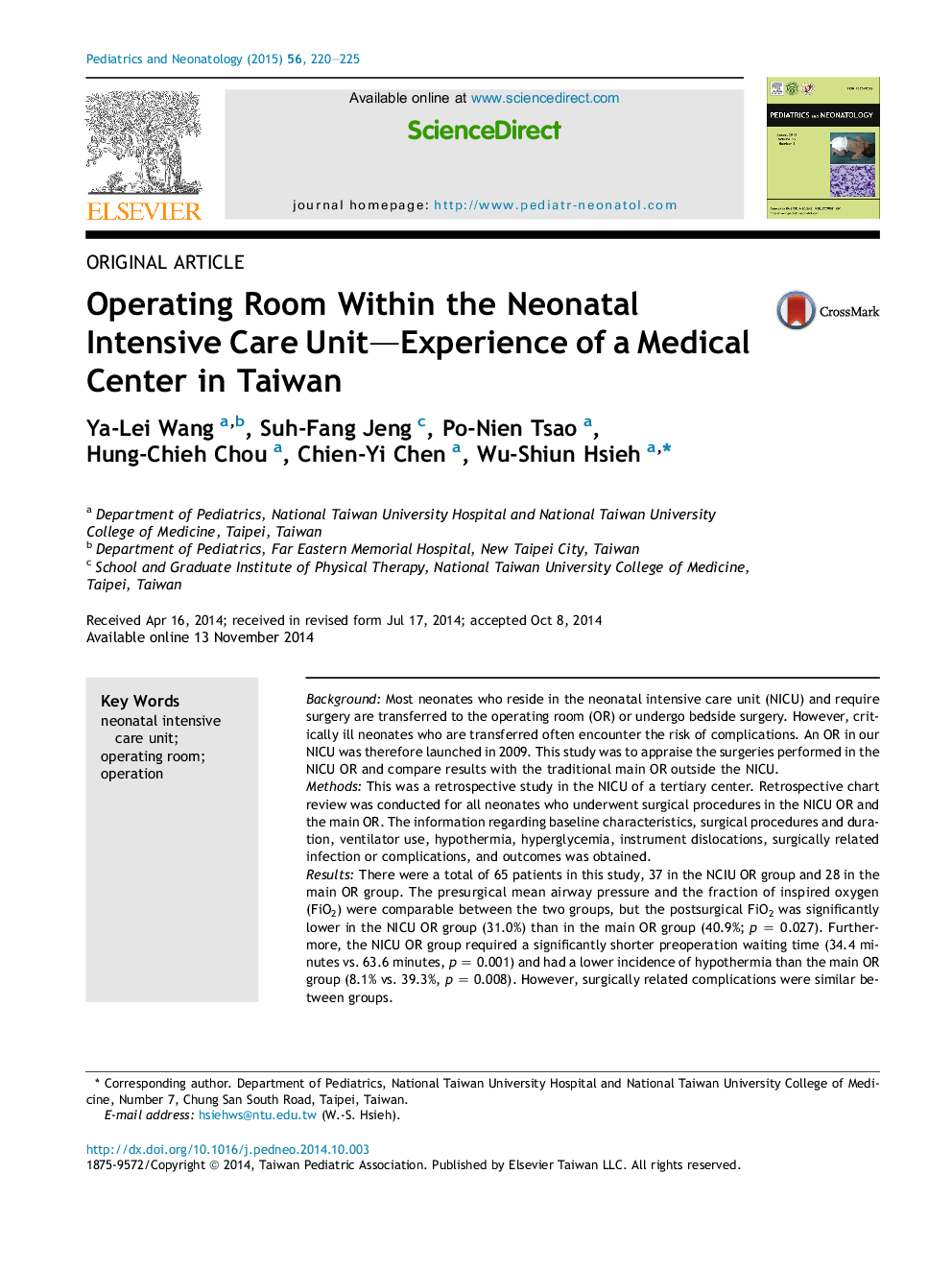| Article ID | Journal | Published Year | Pages | File Type |
|---|---|---|---|---|
| 4174920 | Pediatrics & Neonatology | 2015 | 6 Pages |
BackgroundMost neonates who reside in the neonatal intensive care unit (NICU) and require surgery are transferred to the operating room (OR) or undergo bedside surgery. However, critically ill neonates who are transferred often encounter the risk of complications. An OR in our NICU was therefore launched in 2009. This study was to appraise the surgeries performed in the NICU OR and compare results with the traditional main OR outside the NICU.MethodsThis was a retrospective study in the NICU of a tertiary center. Retrospective chart review was conducted for all neonates who underwent surgical procedures in the NICU OR and the main OR. The information regarding baseline characteristics, surgical procedures and duration, ventilator use, hypothermia, hyperglycemia, instrument dislocations, surgically related infection or complications, and outcomes was obtained.ResultsThere were a total of 65 patients in this study, 37 in the NCIU OR group and 28 in the main OR group. The presurgical mean airway pressure and the fraction of inspired oxygen (FiO2) were comparable between the two groups, but the postsurgical FiO2 was significantly lower in the NICU OR group (31.0%) than in the main OR group (40.9%; p = 0.027). Furthermore, the NICU OR group required a significantly shorter preoperation waiting time (34.4 minutes vs. 63.6 minutes, p = 0.001) and had a lower incidence of hypothermia than the main OR group (8.1% vs. 39.3%, p = 0.008). However, surgically related complications were similar between groups.ConclusionThe OR within the NICU may reduce the risk of complications during transportation and provide continuity of care to critically ill neonates. It also decreases the disturbance to other NICU patients during operation.
